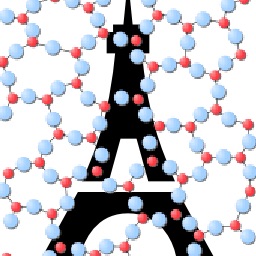Nanoductility in silicate glasses is driven by topological heterogeneity
The existence of nanoscale ductility during the fracture of silicate glasses remains controversial. Here, based on molecular dynamics simulations coupled with topological constraint theory, we show that nanoductility arises from the spatial heterogeneity of the atomic network’s rigidity. Specifically, we report that localized floppy modes of deformation in underconstrained regions of the glass enable plastic deformations of the network, resulting in permanent change in bond configurations. Ultimately, these heterogeneous plastic events percolate, thereby resulting in a nonbrittle mode of fracture. This suggests that nanoductility is intrinsic to multicomponent silicate glasses having nanoscale heterogeneities.
